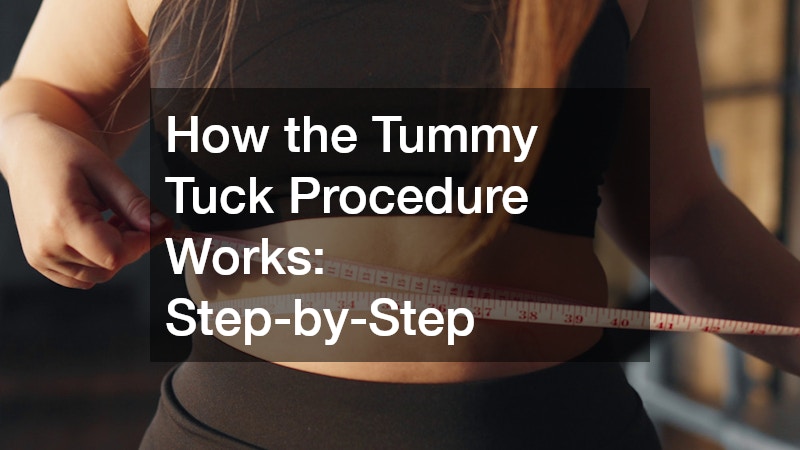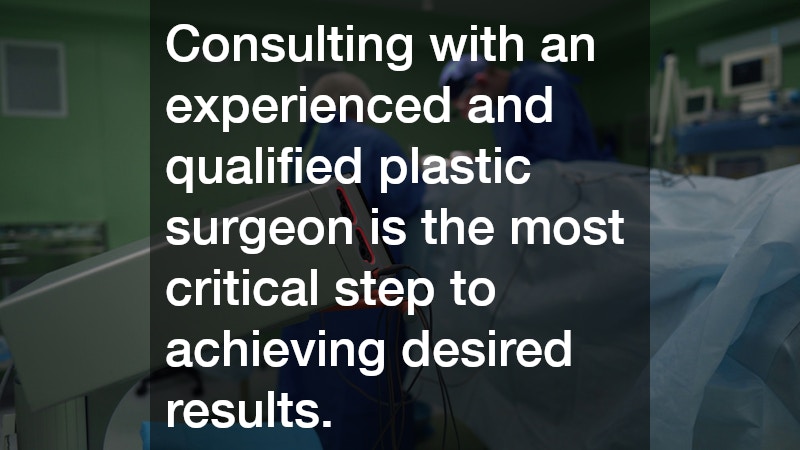
Disclaimer: This website provides health information for educational purposes only and is not a substitute for professional medical advice, diagnosis, or treatment. Always seek the guidance of a qualified healthcare provider with any questions you may have.
The tummy tuck procedure has become an increasingly popular surgical option for individuals seeking a more toned and flat abdominal appearance. Often associated with post-pregnancy recovery, significant weight loss, or aging, this cosmetic surgery can have both physical and emotional benefits. However, before committing to the procedure, understanding its step-by-step process is essential for prospective patients.
A tummy tuck, medically known as abdominoplasty, involves the removal of excess skin and fat from the abdomen, tightening the abdominal wall muscles. This procedure is not merely aesthetic; it can also restore weakened or separated muscles, ultimately improving core stability and posture.
The journey of understanding how the tummy tuck procedure works begins with an initial consultation, followed by the surgical process and a substantial recovery period.
This article aims to demystify the tummy tuck procedure by breaking it down into detailed steps. Knowing what to expect at each stage can empower patients to make informed decisions and enhance their overall experience. As we explore each phase, it’s crucial to remember that the ultimate goal is to achieve a healthier and more confident version of oneself.
The Initial Consultation
The tummy tuck journey begins with an initial consultation with a board-certified plastic surgeon. During this appointment, patients have the opportunity to discuss their goals, expectations, and concerns with the surgeon. A comprehensive medical history, including previous surgeries and any medications being taken, will be reviewed to ensure the patient is a suitable candidate for the procedure.
The surgeon will conduct a physical examination to assess the extent of excess skin and fat, as well as the condition of the abdominal muscles. Based on these findings, the surgeon will recommend a suitable surgical plan, which may involve a full tummy tuck, mini tummy tuck, or extended tummy tuck. This tailored approach ensures that individual differences are respected, and the desired outcome can be achieved more effectively.
Cost considerations and recovery expectations are also discussed during the consultation. The surgeon will outline the risks, benefits, and possible complications associated with the tummy tuck procedure. Properly informed and with a clear understanding of the path forward, patients can move forward with realistic expectations and peace of mind.
The Surgical Procedure
On the day of the surgery, patients are typically admitted to a surgical center or hospital, where the procedure is performed under general anesthesia. The operation starts with an incision made horizontally between the pubic hairline and the navel. The length and shape of the incision depend on the specific type of tummy tuck being performed.
Once the incision has been made, the surgeon will lift the skin to reveal the abdominal muscles. These muscles may be sutured and tightened, particularly if they have been separated due to pregnancy or weight fluctuations. The skin is then pulled down and trimmed, and the remaining skin is sutured together; any excess fat is also removed during the process.
Depending on the extent of the procedure, additional incisions may be made around the navel to allow repositioning if necessary. The operation typically takes between two to five hours, and once completed, the incisions are closed with sutures, skin adhesives, or clips. After ensuring that the surgical site is clean and properly bandaged, the patient is moved to a recovery room.
The Recovery Process
Following the tummy tuck procedure, recovery is a critical phase that requires patience and adherence to the surgeon’s post-operative instructions. Patients typically experience swelling and discomfort in the first few days, which can be managed with prescribed medications. It is imperative for patients to avoid strenuous activities and heavy lifting during the early stages of recovery.
A post-surgical garment, often referred to as a compression garment, is usually worn for several weeks. This garment helps reduce swelling, supports the abdomen, and aids in healing. Patients will have follow-up appointments to monitor their progress and ensure that healing is proceeding as expected.
The recovery process varies for each individual and may take several weeks to months before returning to normal activities. However, maintaining a healthy lifestyle after the procedure can help preserve the results and enhance overall well-being. As time passes and swelling diminishes, patients typically begin to see dramatic improvements in their abdominal contours.
As with any surgical procedure, consulting with an experienced and qualified plastic surgeon is the most critical step to achieving desired results. With the right preparation and mindset, the tummy tuck procedure can be a rewarding journey toward a healthier and more aesthetically pleasing abdominal profile. We hope this guide has illuminated the path for those considering this significant yet empowering surgery.
